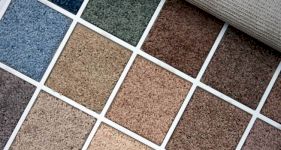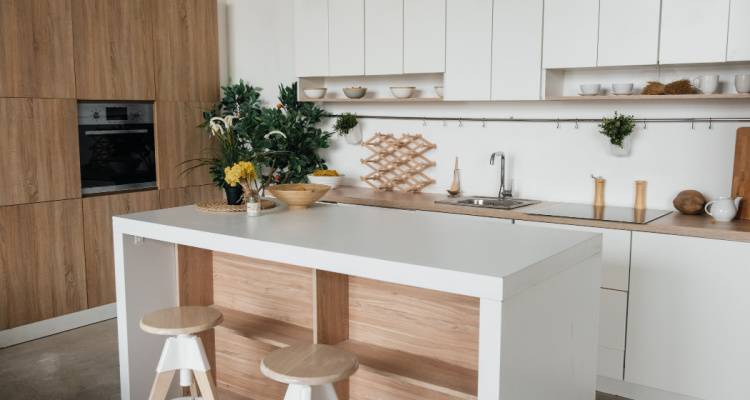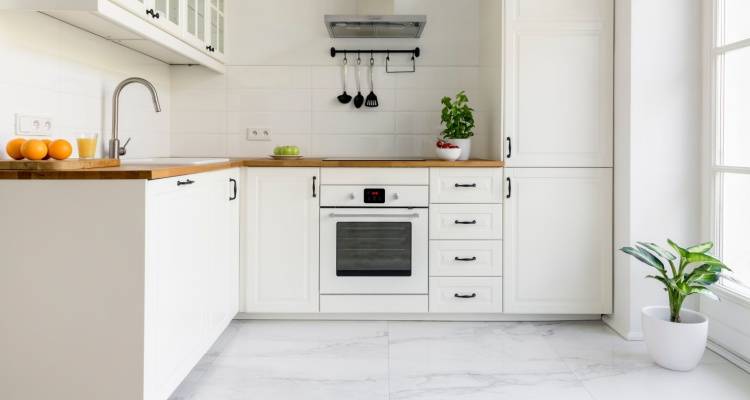Home Water Conservation
Water is the most precious resource on earth, but it’s often overlooked due to its seemingly endless availability.
However, with climate change in effect, bringing with it unpredictable and extreme weather changes, water supply is in state of instability. Droughts in Europe are becoming increasingly more frequent, and despite the UK’s reputation as a rainy and water-filled nation, this isn’t exactly accurate. According to the Energy Saving Trust, 12 out of the UK’s 23 water companies are under acute stress – with the UK collecting less water than ever before.
In this article, we’ll take you through all the ways you can do your part. We’ll discuss why it’s important, the best ways to conserve water and why we all need to consider how we can implement water conversation measures in our homes to prevent water supply issues for our children and grandchildren.
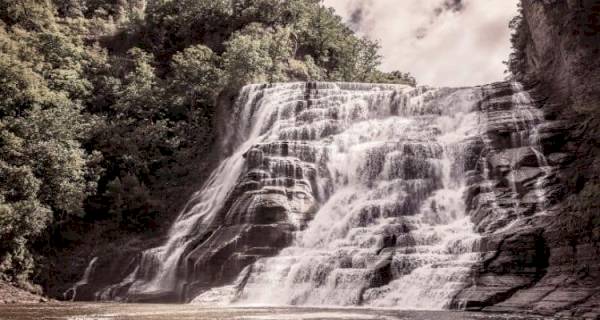
Contents
- What Is Water Conservation?
- Why Is Water Conservation Important?
- Water Conservation Facts
- How Can I Conserve Water?
What Is Water Conservation?
Water conservation is all about using water more efficiently and reducing the amount of unnecessary freshwater wastage in the home. Freshwater is often wrongly considered as an unlimited resource, but the truth is far different. Mass and unnecessary amounts of water wastage is not only costly to you as the homeowner, but it has a negative impact on water supply and water treatment works across the nation. Unless the entire country begins to alter their habits, the long-term effect could be drastic.
The increase in demand for freshwater can be attributed to a few different factors. Firstly, the global population growth naturally increases the requirement for freshwater. The population continues to increase by about 1.1% per year, and this trend doesn’t show any signs of slowing down soon. Another factor is the agricultural industry, which has also continued to grow year on year, with a higher population to serve. Agriculture accounts for around 70% of freshwater consumption across the world, so small increases in agricultural water use has a very big effect on global water supplies.
You would probably be surprised to see how many everyday items use up considerable amounts of water to be produced. For example, it takes 2,720 litres of water to produce one cotton t-shirt, and it takes 5,500 litres of water to produce 1kg of beef. With those figures, it’s not hard to see where all of the water supply is directed, and without a more proactive approach to conservation, supply issues may not be far away into the future.
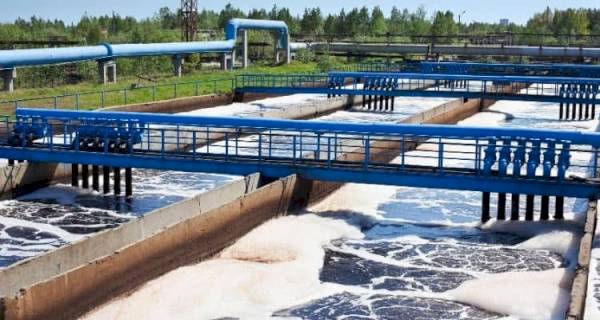
Why Is Water Conservation Important?
Water conservation is important for a variety of reasons, and in turn, provides a multitude of benefits to the conserver. Firstly, the financial impact of water wastage is often dismissed by homeowners as a necessary evil. Using items and appliances around the home that don’t actively aim to help save water can have a very negative impact on your finances, especially over a long period of time. Simple things like leaving the tap running while brushing your teeth, indulging in super-long showers and running the tap while cleaning dishes can have an extreme impact on the amount of water you waste each month.
The impact water wastage has on the environment is another crucial aspect that illustrates how important water conversation is. At the very base level, freshwater is integral for the survival of living species, both humans and animals, and while there may seem to be an abundance of water on the earth, only 1% of it is usable as freshwater. Of that 1%, agriculture needs to use about 70% of it to keep animals alive and feed crops, meaning that a waste of this water creates big problems across the board for the environment. Not to mention the amount of extra energy that is required by water plants to ensure more water is available, something which is only increasing as the world grows.
The water available in the world is limited; there isn’t a proven way to create more water than what already exists. Used water is recycled back through lakes, seas and oceans, which in turn will travel back through the cleaning process and back through our taps at home. However, this process takes time, energy and effort, and some used water can be extremely tough to restore back to freshwater standard. This creates issues for us all which can be improved through more thoughtful water consumption and an effort to conserve water locally.
Water Conservation Facts
- The demand for water is growing steadily at a rate of 1% per year, with no signs of slowing.
- The average UK citizen uses around 150 litres of water per day.
- A 3mm hole in a high-pressured water pipe loses 8,450 litres in 24 hours.
- A toilet that has a leak will waste 344,470 litres in 30 days.
- Approximately 1 in every 300 homes and buildings has a water leak of some sort.
- A single cotton t-shirt costs around 49 bathtubs full of water to produce.
- A running household tap will use 6 litres of water per minute.
- Household hoses will use about 1,000 litres per hour.
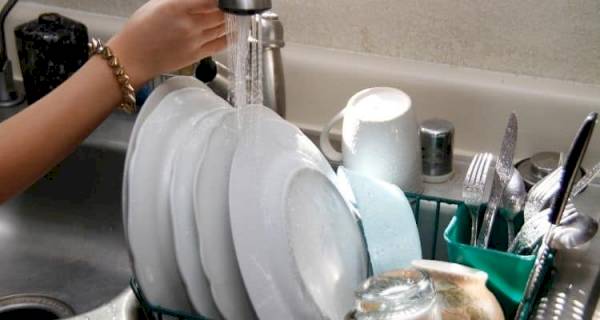
How Can I Conserve Water?
Water conservation doesn’t need to involve additional pieces of equipment, expensive upgrades or large areas of space. It can be as technical or as simple as you like. For example, you can save 6 litres of water per minute by simply turning the tap off as your brush your teeth, and you could save 60 litres per week by simply fixing a leaking tap.
Water conservation methods vary greatly throughout the home, but the key thing to remember is that you can make active changes in almost every aspect of your water consumption that will have a positive impact on the amount of water you waste and use.
In the following sections, we’re going to explore each key part of your home and how you can conserve water within it, complete with methods, products and benefits.
Water Conservation in the Kitchen
Water is used most predominantly in your kitchen, for everything from washing clothes, cleaning dishes and cooking food. But, it also presents the best opportunity for water conservation, due to the options we now have available to reduce water usage in all areas of the kitchen. Here are the best places to reduce water usage:
1. Dish Washing
Cleaning dishes is one of the least enjoyable chores in the home; it’s time consuming, inconvenient and uses a great deal of water. You can conserve water by not rinsing dishes and cutlery under the tap as you clean, removing the need for a continuous stream of fresh running water, which a lot of households do. This alone will save litres of water per week, but you can go a step further, saving precious time and even more water by buying a dishwasher.
Dishwashers, especially newer versions, are very energy and water conscious, with brands generating their focus into producing appliances that not only have a more positive impact on the environment but also saves the customer money on running costs. Dishwashers use less than half the water needed to wash dishes in the more traditional fashion. This alone, combined with the ease of use and the relatively low cost of dishwashers, makes it a viable and sensible option for water conservation in the kitchen.
2. Washing Machines
Washing machines are a staple in every household in the country. We have very few options outside of washing our clothes in a machine, and therefore many people believe that they can’t possibly use any less water than they already do. However, this isn’t exactly true. Firstly, if you make an effort to renew your washing machine every couple of years, you will be using products that are designed to use less water than their predecessors, as technology improves. Secondly, too many people forget about their washing until it either needs to be rewashed or put through a rinse cycle so it can be refreshed and hung out to dry, this only doubles the water consumption needed per a load of washing. By setting a timer on your phone or watch, you won’t need to use that second load of water, thereby conserving more water over a long period of time.
3. Taps and Faucets
There are wonderful products now available on the market that are designed to use less water yet provide an increased amount of water pressure; these products are known as low-flow faucets or taps. They work by restricting the water by allowing fewer routes of escape, creating a higher pressure and retaining more water for everyday use. Due to the increased pressure, they work far more efficiently than conventional taps for things like washing your hands or rinsing a plate, and filling jugs and glasses take the same amount of time. These products are cheap, coming in at around £10 per attachment, can be found in any DIY store and are incredibly easy to fit your taps at home.
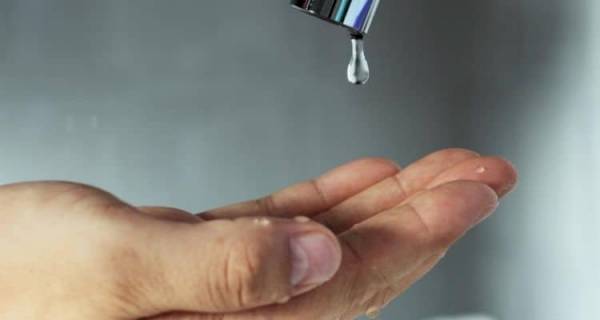
4. Food and Drink
You can divide water usage into two categories, especially when we look at food and drink. The first category is direct use, in which we use that water and only that water directly, for example, pouring yourself a glass of water only uses the amount of water within the glass. The second category is virtual use, in which we have to consider how much water went into making that product; for example, it takes 63 gallons of water to create a hamburger.
So, when we think about the food and drink we consume, we should be mindful of what it cost the environment. Foods like beef take an unbelievable amount of water to produce when compared to other meats like chicken or pork. If you’re someone that consumes a lot of beef, you should consider what other options you could switch too more often to consider your virtual water usage. Another thing to be mindful of is drinks, especially when you consider it takes 33 gallons of water to produce a 16oz bottle of cola. It’s not just the contents of the bottle, but the lifecycle it had to create before you purchased it inside of a shop.
5. Cooking
Cooking is another aspect of water consumption that is seemingly impossible to change, but there are options to conserve water without compromising on anything. First off, you can steam vegetables instead of boiling them, which will save about 70% of the water you would ordinarily use. Secondly, you should consider the sizes of pots and pans you need to use when cooking. If you’re cooking a small portion of pasta for one, there is no need to use a large pan full of water. Lastly, you should evaluate how you defrost and hydrate foods, as lots of people tend to defrost foods in water. However, you can purchase products for as little as a few pounds that will not only defrost food quicker and easier but require no water usage at all.
These may all seem like very small changes and in turn, very small amounts of water conserved, but every small, long-term change will reduce your water usage footprint drastically over the years, and if everyone made those little changes, there would be no need for any drastic changes.
Water Conservation in the Bathroom
Bathrooms are dedicated to water usage, from toilets to showers and everything in between; therefore, it’s a wonderful place to reduce your water wastage, and there are a plethora of opportunities to do just that!
1. Showers and Baths
A bath is indulgent, luxurious and relaxing. However, it’s also very costly to water conservation efforts, especially if you indulge all too often. A bath uses 70 gallons of water, whereas a five-minute shower, with a standard showerhead, uses only 20 gallons. If you install a low-flow showerhead to your shower, which works in the same way as the low-flow tap or faucet, a five-minute shower will use less than 10 gallons of water. That’s an extremely vast saving of 60 gallons of water per person, per wash time.
Low flow showerheads work in the same way as the taps and faucets we mentioned in the previous section, and they come in a variety of styles and versions. The showerheads regulate the water allowing for less usage, yet more power and the majority of the heads have different settings to suit your personal preferences. They are also extremely inexpensive, coming in at around £15-£25 depending on what style and finish you desire.
2. Toilets
Toilets are a big water wastage culprit in the bathroom, but there are many ways in which you can reduce the amount that they waste without breaking the bank. Firstly, don’t use it as a wastebasket by flushing wipes and tissues down it, when you could simply throw them away! Another way to reduce the water wastage in your toilet is to install a high-efficiency toilet, which costs anything between £90-£250 depending on the style you would like; this will use a combination of higher pressure and less water to perform the same as any other toilet while using around half of the water a standard toilet would. You can also ensure that your toilet has a dual-flush function, ensuring that you only use as much water as you need per flush.
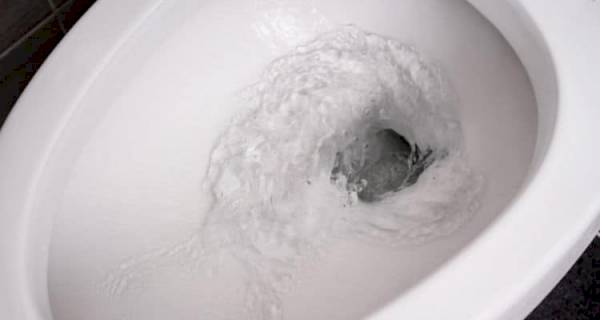
3. Sinks
There are some simple things you can integrate into your normal life in the bathroom that will drastically reduce your overall water footprint. You should make sure that you don’t leave the tap running as you brush your teeth, which saves about 4 gallons per minute, resulting in water conservation of about 200 gallons per week for a family of four.
As we’ve mentioned with kitchen taps and showerheads, you should also install an inexpensive low-flow attachment to your tap in the bathroom. This will heavily reduce the amount of water you use and in turn, help save the environment and save you money each month on your utility bills.
4. Drying
Washing and drying your towels too often is unnecessary and really contributes to more wasted water than you may think. Instead, you can hang your towels out to dry over the radiator or bannister after showers, which will keep them crisp and dry, without the need to rewash them frequently. They’ll also last a lot longer as frequent washing will degrade them much faster.
5. Repairs
Faults in your bathroom with either taps, showers or toilets can create a mass amount of wasted water. For example, a dripping shower head loses 5 gallons of water per day! By regularly checking and repairing your appliances, you can severely reduce the amount of water wasted in your home.
To check for toilet leaks, pour a small amount of food colouring in the toilet water tank, then carefully watch to see if any of the coloured water leaks into the toilet bowl. This indicates that there is a leak in your toilet that is wasting water and money. A leaking shower head or tap is a lot more obvious but wastes just as much water. Usually, this can be fixed by simply replacing the head or faucet, or by tightening a pipe or fixing somewhere in the plumbing system.
By implementing small changes to your normal routine in the bathroom, you can dramatically reduce your water footprint in the home, without spending much on new equipment or additions.
Outside Water Conservation
We use water around the home in many ways without even realising it. We wash the car, water the plants, clean the patio, and we mostly use a hose which distributes mass amounts of water in unbelievably quick fashion. Here are some ways to reduce this usage:
1. Washing the Car
Instead of using a running hose to wash the car, instead clean it first with a bucket of warm soapy water as you usually would then use the spray nozzle on your hose to rinse the car clean, in the process saving around 100 gallons of water than you normally would have with a running hose.
2. Clean Often
We clean our yards and patios sporadically and usually with the help of a hose or pressure washer to remove weeks and months of grime and dirt from the flags and tiles. But, with a more proactive approach, you could save yourself lots of water and effort. When the weather is dry, take a brush or broom out to the yard and brush away all of the dried dust, dirt and leaves before it has a chance to stick on to your patio. You can also use a leaf blower to make this job a lot easier. This way, you’ll keep your garden looking, it’s best at all times, instead of waiting for it to be dirty enough to need to be cleaned.
3. Check for Leaks
If you have any automatic sprinkler systems in your home, it’s a good idea to check for leaks regularly. Not only will this excess water be having an adverse effect on your garden and plants, but it will also be silently wasting tons of water in the process, so make sure you make a point of regularly checking on all of your automatic water systems, hoses and sprinklers.
4. Gardening
Gardening is a very fruitful, beneficial and popular hobby; however, it can be a detriment to water usage if the right types of plants aren’t used. When you’re purchasing seeds, bulbs and other foliage in your garden, think about those seeds and plants that survive with less water. You may be surprised just how much water some plants need to keep alive, and how much of a hassle it can be to keep on top of it.
You can also plant your own herbs, fruit and vegetables; that way, you can monitor just how much water is going into producing your food. It’s also a great way to learn more about your food and where it comes from, especially if you have children, it’s a great way to show them what goes into producing their food and why it’s important to monitor the amount of water you use around the home.
When your watering plants and your garden, try and plan ahead. It’s pointless spending the day, and lots of water, watering everything in your garden if you’re due to have heavy rain the next day. Check out the Met Office website for detailed weather forecasts and save yourself some water and effort.
5. Reuse Wastewater
This is a method that is definitely in its infancy and requires some big changes to your normal routine, but it can be a fantastic way to conserve water. Wastewater is also known as greywater, which comes from sinks, washing machines and dishwashers, not to be confused with blackwater which comes from toilets. Blackwater cannot be reused in any way until it has been cleaned by the water company in your area. Greywater can be collected and reused to water plants and gardens and used to wash down patios and yards. However, it is important that you use eco-friendly soaps and detergents when reusing this water on the landscape around your home. You’ll also need to consult with a plumber to discover the best and safest way to collect this greywater for reuse.
6. Collect Rainwater
Rainwater is clean, fresh and able to use for just about anything when used correctly. A lot of rain is collected by grids, bodies of water and other sources, but a lot of it is also lost, something which you can avoid in your home. By installing a ‘Water Butt’ in your yard, you can collect this rainwater and reuse it for whatever you like. They come in all shapes and sizes and can cost as little as £20. For example, you can purchase a water butt that holds 210L of water for just £30, that’s enough to wash your car five times, water your plants a hundred times or hose down the patio ten times! This is a great way to really make the most of all the water sources we have available and to conserve as much water as you can, putting it to good use around the home.
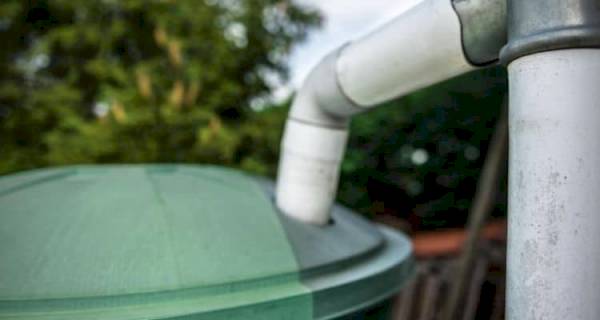
Conclusion
This article has provided ways in which we can conserve water around our home, both by installing new products and by simply reassessing how we use our existing appliances. Hopefully, this article has given you a cause for concern that will help you to take a step back and review your normal routine, spotting areas for which you can improve and reduce your water usage – whether it’s taking shorter showers, fewer baths, or simply switching the tap off each time you’re brushing your teeth.
Water conservation doesn’t require us to stop doing things we enjoy or are convenient; instead, it means that we pay more attention to what we are doing. Steaming instead of boiling your vegetables doesn’t degrade the taste in any way, but it will reduce the amount of water your use when cooking.
In London alone, we lose about 300 Olympic swimming pools worth of water, per day, on ageing a damaged water pipe. This alone shows how much of this precious natural resource is being lost unnecessarily, and how important it is that we all take notice of the issues that are gaining daily and begin to reduce our water footprint.
When it comes to water conservation, the old cliché is never truer, every little helps.
FAQs
What is the definition of water conservation?
The conservation definition is the prevention of wasteful use of a resource. Therefore, water conservation is simply the prevention of wasting water as a precious resource.
How many litres of water does a toilet flush use?
An older or more standard toilet will use about 14 litres per flush. This is simply too much, and that’s why newer, more eco-friendly toilets, use far less. In fact, new water-efficient toilets use around 8-10 litres per flush, a massive difference, especially if you consider how much you’re likely to save over the weeks, months and years.
What uses the most water in a home?
You may think that a bath uses more water than anything in the home, considering the mass amount of water that is required to fill one. However, the toilet uses far more water due to its regular use and heavy water loss.
What uses more water, a bath or shower?
A bath requires 60 litres of water to fill, and a standard shower requires about 20 litres for a five-minute shower. You can reduce this even further by installing a low-flow showerhead, which takes the water consumption down to 10 litres to run for five minutes.
How is water recycled by water companies?
Drains will take all wastewater away from the home; you’ll be able to see these grids and pipes at the back and front of your home. From here, the water will go through a journey of cleaning and filtering to ensure that it’s ready to be sent back down our pipes as drinking water. The treatments are done in stages; first, the screening process happens where foreign objects like rags and debris is removed from the water to prevent any clogging or damage to the pipes and systems further down the line.
Second, the primary settlement stage occurs where the water is left to rest so sludge can fall to the bottom and the clear water can move on to the biological treatment stage in which bacteria, algae and fungi is removed from the water. From there it will go to the final settlement before being released back into the rivers and seas. From those rivers and seas, clean water stations and plants take this water and put it through more cleaning and screening processes before sending it down the pipes as clean, drinkable water.
Sources
https://waterwise.org.uk/save-water/
http://www.waterintelligence.co.uk/water-facts/
https://www.portapotty.net/water-conservation/
https://quiethut.com/save-water/
https://blogs.ei.columbia.edu/2011/04/04/from-wastewater-to-drinking-water/
https://www.detailingworld.co.uk/forum/archive/index.php/t-1700.html
https://www.efficientenergysaving.co.uk/rainwaterharvesting.html
https://learn.eartheasy.com/guides/45-ways-to-conserve-water-in-the-home-and-yard/
https://www.hometips.com/buying-guides/showerheads-low-flow.html
https://www.tradewindsimports.com/blog/water-saving-bathroom-tips/
https://rainbowintl.com/blog/5-ways-to-conserve-water-in-the-bathroom
https://www.constellation.com/energy-101/water-conservation-tips0.html
https://slate.com/human-interest/2016/08/how-is-wasting-water-bad-for-the-environment.html
https://friendsoftheearth.uk/natural-resources/13-best-ways-save-water-stop-climate-breakdown
Last updated by MyJobQuote on 25th August 2020.
